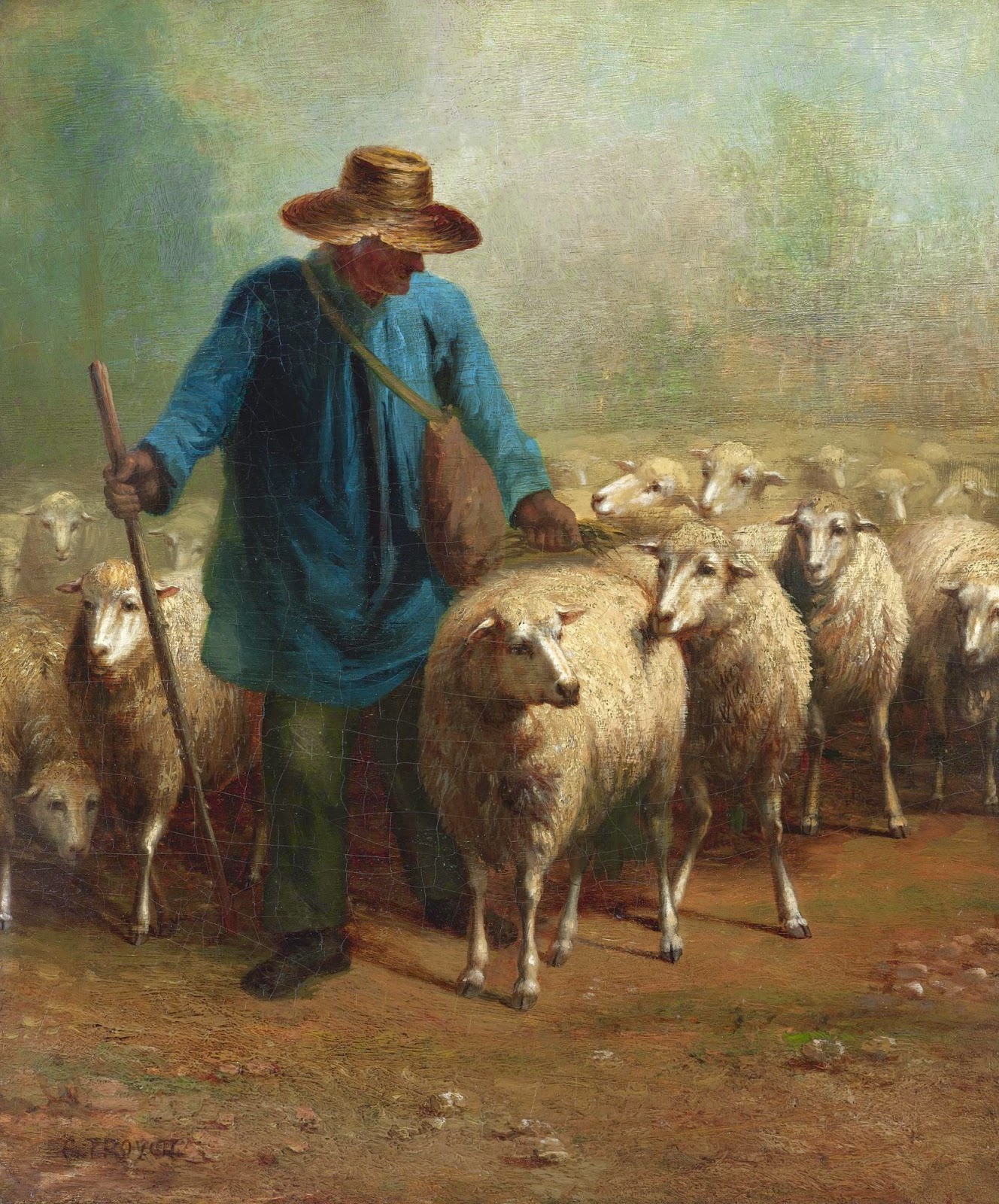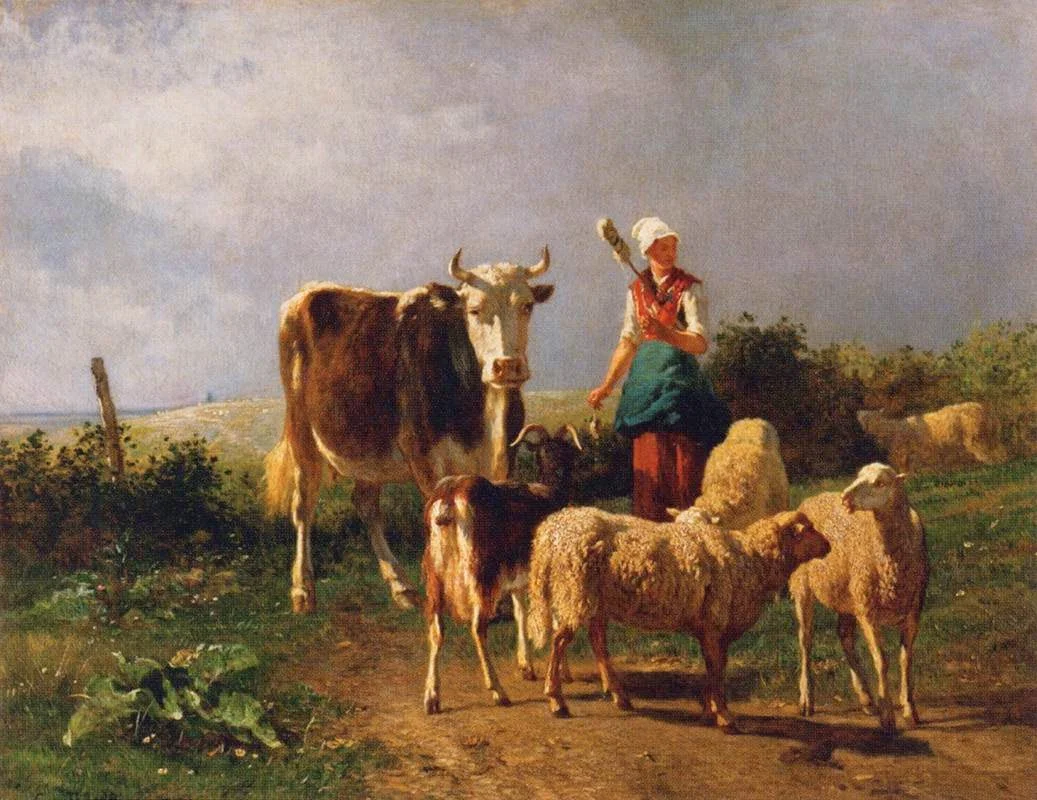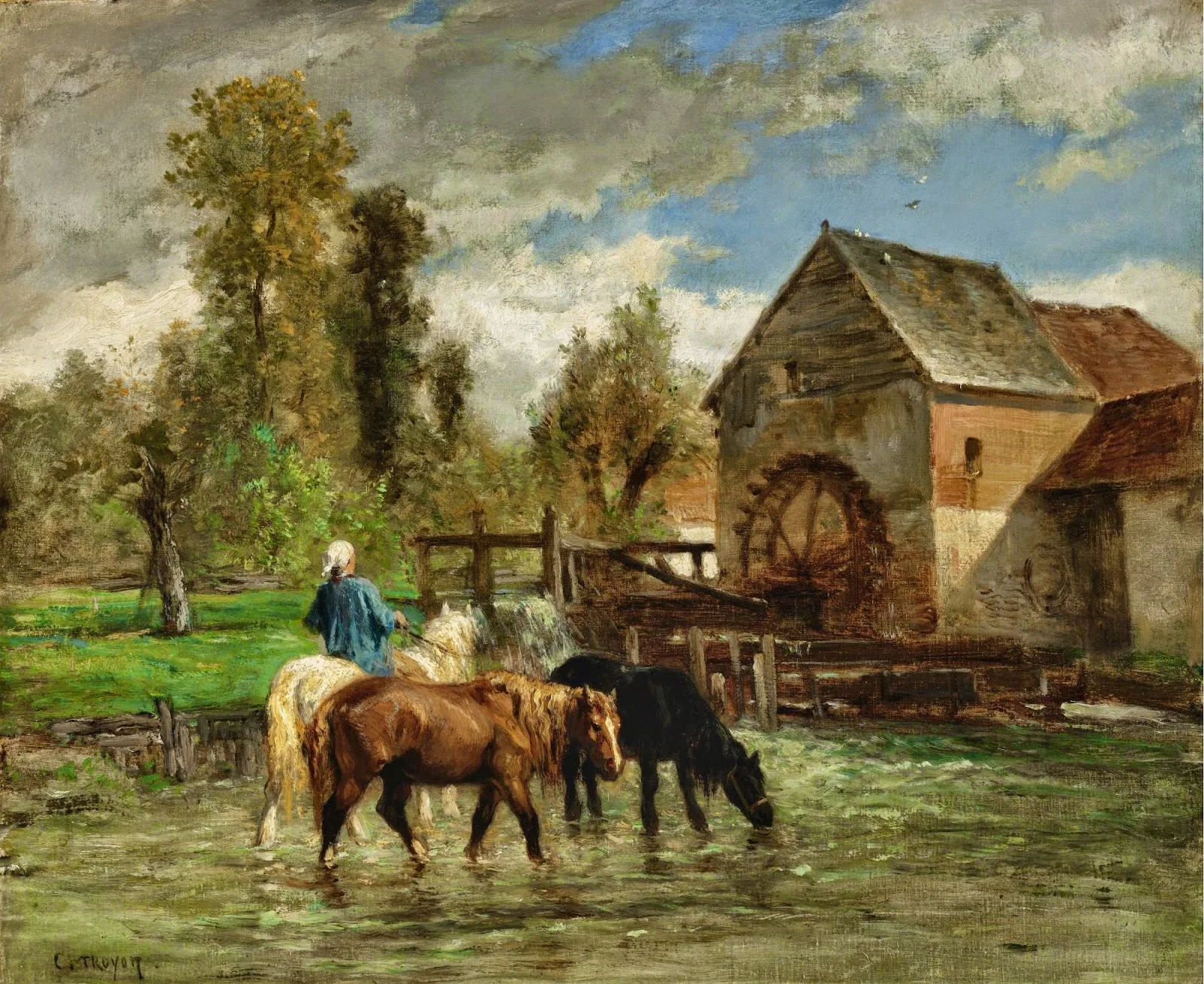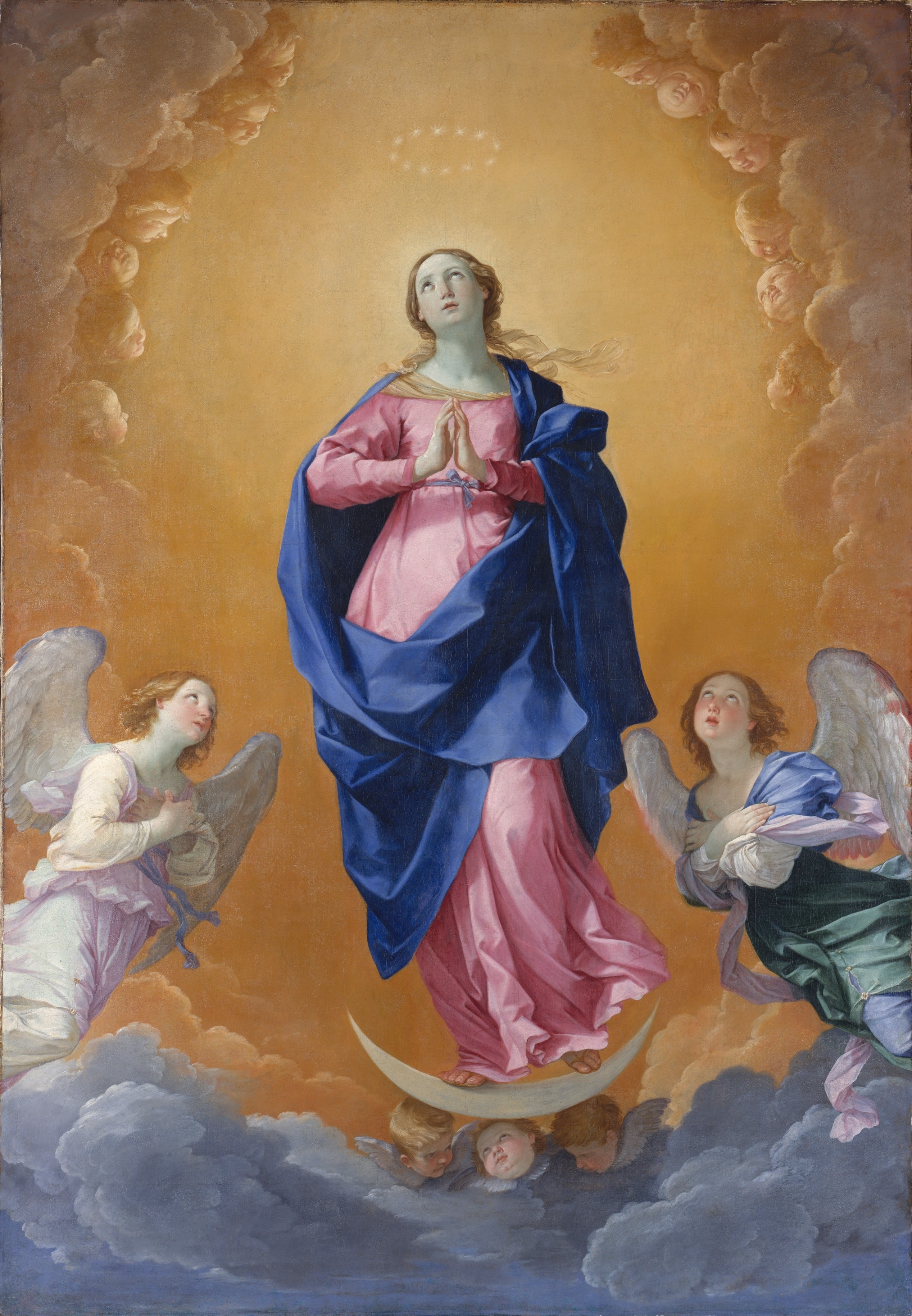TROYON, Constant - Pittore, nato a Sèvres il 28 agosto 1810, morto a Parigi il 20 marzo 1865.
Figlio di un decoratore della manifattura di Sèvres, e desiderando entrarvi anch'egli come pittore di fiori, cominciò a dipingere bozzetti dal vero, prendendo gusto al paesaggio.
Nel 1833 espose opere ispirate ai sobborghi in cui viveva: La Fête de Sèvres; Un coin du Parc de St.-Cloud, rivelandosi ancora legato alla maniera classica, pesante nelle ombre ed analitico.
I consigli di C. Roqueplan gli schiusero orizzonti più vasti; il Limousin e la Creuse l'ispirarono.
Ne riportò diverse vedute, tra cui: Vues prises aux environs d'Argenton (1836) e Foire champêtre dans le Limousin, 1838.
Nel 1841 si recava in Bretagna, dove si fece sempre più libero ed eseguì Tobie avec l'Ange.
Ma la sua evoluzione fu definitiva quando, conosciuti
Th. Rousseau e
J. Dupré, entrò nella pleiade dei paesisti romantici, detta "
scuola del 1830", e frequentò la foresta di Fontainebleau, culla del paesaggio francese moderno, nel quale aleggiava lo spirito del grande iniziatore Constable.
L'opera sua si trasfigura, come attestano i quadri del 1844: Paysage dans la forêt; Dessous de forêt; Vue prise à Fontainebleau, 1845.
Finalmente un viaggio nel Belgio e nell'Olanda completa la sua vocazione. Vi conosce gli animalisti, vi ammira A. Cuyp e Pol Potter, ma sopra tutti
Rembrandt.
Imparò allora a rappresentare natura e animali in intimo accordo.
Nel 1849 espose il celebre Moulin, palesandovi l'influenza di
Rembrandt.
Col 1850 si dedicò alla rappresentazione di greggi ed armenti nei campi.
Non ebbe come i pittori dei Paesi Bassi il senso dell'atmosfera, ma assai vivo in lui fu l'affetto per gli animali che aiutano l'uomo nel suo lavoro.
Ricordiamo: Boeufs se rendant au labour; Effet du matin, 1855; Le retour à la ferme; Le retour du marché; La vache Rousse, tutti al Louvre.
L'esposizione Universale del 1855 consacrò la sua fama.
Fu nominato Cavaliere della Legion d'Onore dopo il Salon del 1849.
Le opere del Troyon sono nei musei del Louvre, di Lilla, di Amiens, di Montpellier e di Bordeaux. | di Andrée R. Schneider, © Treccani, Enciclopedia Italiana









.jpg)
.jpg)













































.jpg)
.jpg)








%2BDutch%2Bportrait%2Bpainter.jpg)
%2BDutch%2Bportrait%2Bpainter.jpg)
.jpg)
.jpg)













